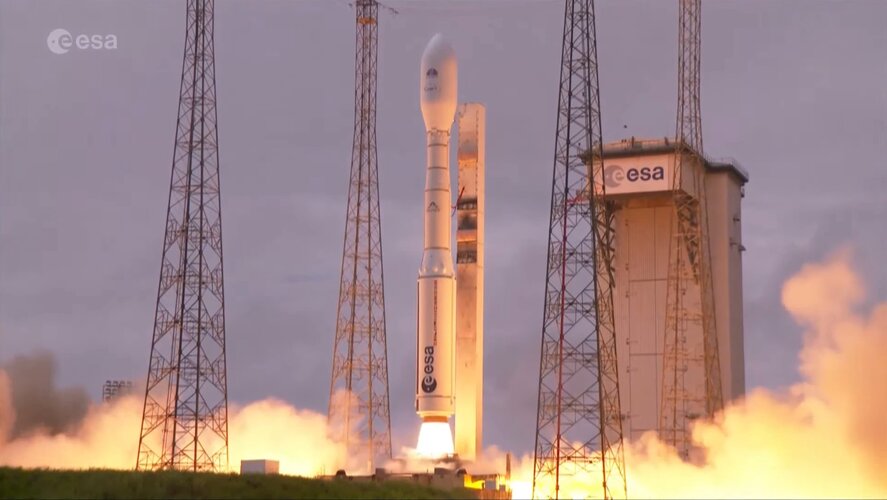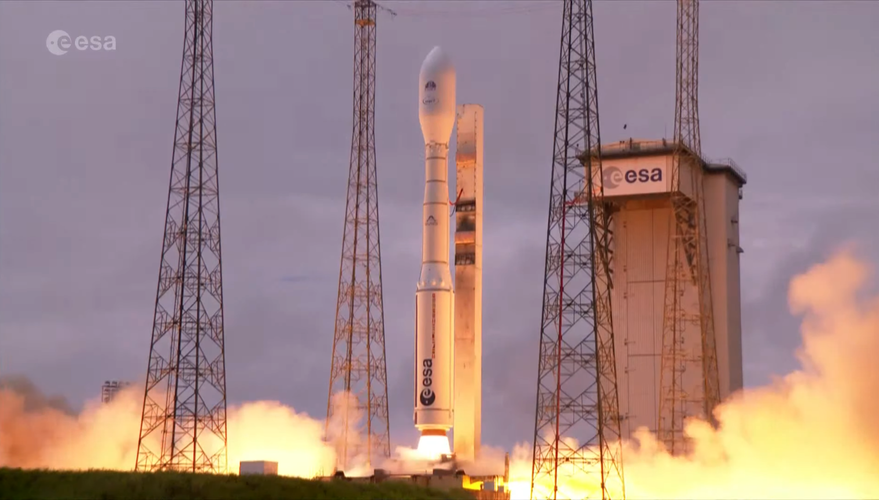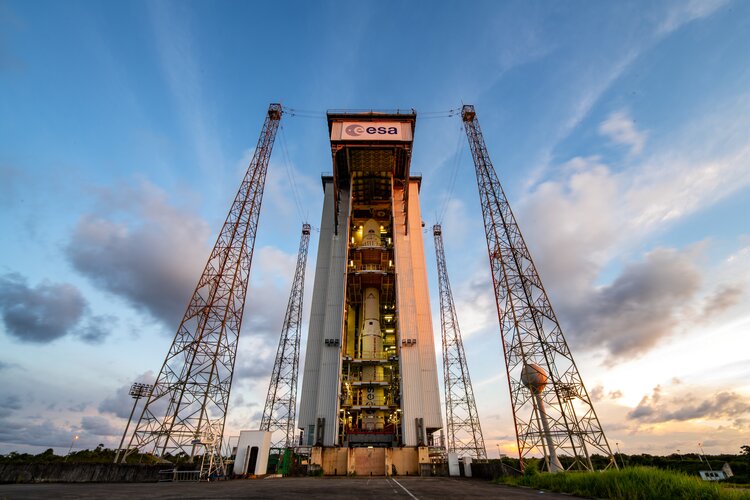
Copernical Team
SIRI-2 to qualify technologies for radiation detection in space

U.S. Naval Research Laboratory scientists launched the second Strontium Iodide Radiation Instrument (SIRI-2) instrument in December 2021 onboard Space Test Program (STP) Sat-6. SIRI-2, a gamma-ray spectrometer, will demonstrate the performance of europium-doped strontium iodide gamma ray detection technology with sufficient active area for Department of Defense (DoD) operational needs.
The first SIRI mission was launched Dec.
Space weather will delay your trains

Fluctuations in space weather are disrupting train signals and causing significant delays. A project investigating the effect of solar storms on railway signals will be presented this week at the National Astronomy Meeting (NAM 2022) by Cameron Patterson, a Ph.D. student at Lancaster University.
The sun's tendency to affect technology on Earth, as well as in space, is known as space weather. In railways, electric currents caused to flow in the Earth by solar activity can interfere with the normal operation of signals, turning green signals to red even when there is no train nearby.
Patterson says: "Most of us have at one point heard the dreaded words: 'your train is delayed due to a signaling failure,' and while we usually connect these faults to rain, snow and leaves on the line, you may not have considered that the sun can also cause railway signals to malfunction.
Vega-C liftoff
 Video:
00:06:42
Video:
00:06:42
Flight VV21 clears the launch pad to begin the inaugural mission of ESA’s new Vega-C rocket from Europe’s Spaceport in French Guiana.
Highlights of the inaugural Vega-C launch
 Video:
00:02:35
Video:
00:02:35
ESA’s newest launch system has faced its first full validation test, carrying LARES-2, a scientific mission of the Italian space agency ASI, and a secondary payload package of French, Italian and Slovenian research CubeSats.
Vega-C successfully completes inaugural flight

ESA’s new Vega-C rocket has completed its inaugural flight, placing main payload LARES-2 – a scientific mission of the Italian Space Agency ASI – into its planned orbit. Six research CubeSats from France, Italy and Slovenia flew as secondary payloads. The launch caps a multi-year effort by ESA, prime contractor Avio and industrial partners in 13 ESA member states to build on the heritage of its predecessor, Vega.
Vega-C: watch the launch

ESA’s new Vega-C rocket is nearly ready for its 13 July inaugural flight. You can follow live on ESA Web TV - EN or IT
Flight VV21 will now lift off as soon as 14:13 CEST, pending suitable conditions for launch.
Broadcast is now live - EN or IT
14:13 CEST/13:13 BST/12:13 UTC/09:13 Kourou – liftoff
Undead planets: the unusual conditions of the first exoplanet detection
 The first ever exoplanets were discovered 30 years ago around a rapidly rotating star, called a pulsar. Now, astronomers have revealed that these planets may be incredibly rare. The new work will be presented tomorrow (Tuesday 12 July) at the National Astronomy Meeting (NAM 2022) by Iuliana Ni?u, a PhD student at the University of Manchester.
The processes that cause planets to form, and s
The first ever exoplanets were discovered 30 years ago around a rapidly rotating star, called a pulsar. Now, astronomers have revealed that these planets may be incredibly rare. The new work will be presented tomorrow (Tuesday 12 July) at the National Astronomy Meeting (NAM 2022) by Iuliana Ni?u, a PhD student at the University of Manchester.
The processes that cause planets to form, and s NASA releases first full set of images from $10B James Webb Space Telescope
 NASA on Tuesday unveiled its first full collection of images taken by the James Webb Space Telescope - showcasing the type photos that engineers had in mind when they first conceived of the telescope in the 1990s.
The space agency unveiled the collection of five images from the $10 billion telescope during an event late Tuesday morning at the Goddard Space Flight Center in Greenbelt, M
NASA on Tuesday unveiled its first full collection of images taken by the James Webb Space Telescope - showcasing the type photos that engineers had in mind when they first conceived of the telescope in the 1990s.
The space agency unveiled the collection of five images from the $10 billion telescope during an event late Tuesday morning at the Goddard Space Flight Center in Greenbelt, M Cosmic cliffs and dancing galaxies: Webb begins era of discovery
 The cosmic cliffs of a stellar nursery and a quintet of galaxies bound in a celestial dance: NASA released the next wave of images from the James Webb Space Telescope Tuesday, heralding a new era of astronomy.
"Every image is a new discovery," said NASA administrator Bill Nelson. "Each will give humanity a view of the universe that we've never seen before."
Released one by one starting f
The cosmic cliffs of a stellar nursery and a quintet of galaxies bound in a celestial dance: NASA released the next wave of images from the James Webb Space Telescope Tuesday, heralding a new era of astronomy.
"Every image is a new discovery," said NASA administrator Bill Nelson. "Each will give humanity a view of the universe that we've never seen before."
Released one by one starting f Hypersonics: Developing and defending against missiles far faster than sound
 The challenges of the hypersonic era in military operations are immense. But so are the abilities of innovators who work together to solve them.
That was the message when Wes Kremer, president of Raytheon Missiles and Defense, a Raytheon Technologies business, spoke to investors about how teams are working across the company to solve the myriad science and engineering problems that come wi
The challenges of the hypersonic era in military operations are immense. But so are the abilities of innovators who work together to solve them.
That was the message when Wes Kremer, president of Raytheon Missiles and Defense, a Raytheon Technologies business, spoke to investors about how teams are working across the company to solve the myriad science and engineering problems that come wi 





























